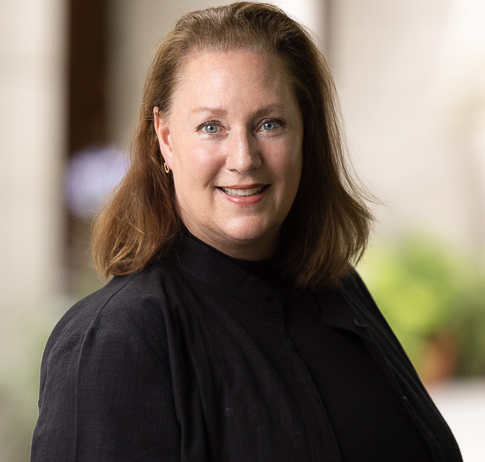Article
A new path forward for surplus land owners in California
22 November 2023 | 3 minute read
This article was originally published in Law360 on November 17, 2023.
On Oct. 11, California Gov. Gavin Newsom signed into law a package of 56 bills covering many land use and tenant rights issues.
Notable in this long list of new laws was S.B. 4, originally proposed several years ago and finally passed this year after several last-minute amendments.[1]
Supported by a broad coalition of housing advocates, religious groups and higher education, S.B. 4 enables certain owners of surplus land to attain by-right or ministerial entitlements to build affordable housing if the requirements of this law are met and certain objective, nondiscretionary local standards are satisfied.
In many ways, the new law reflects S.B. 35, concerning the builder's option process,[2] enacted in 2017 and now successfully used by project applicants throughout the state. Although S.B. 35 sunsets in 2026, there is considerable support for extending its life. The new S.B. 4 is codified in Section 65913.16 of the Government Code.
Why this law is important
The Terner Center for Innovation and Housing, U.C. Berkeley, recently analyzed land potentially qualifying for development under S.B. 4 and concluded that approximately 171,000 acres of land jurisdictionally qualify.[3]
This excellent study is worth reading for anyone interested in housing law. The study concludes that, even assuming inherent unsuitability of some candidate acreage, the remaining acreage would house the equivalent of a major city. Additionally, the eligible land is definitionally located in established urbanized areas[4] and is relatively convenient for services and transit.
The widespread distribution of candidate sites enriches the law's potential benefits. Implementation of this new legislation will also improve the ability of cities and counties to meet their regional housing needs allocation targets.
On another plane, churches — as a class of institutions — are midstream in a national cultural shift, with attendance and financial support in decline for many. One commonly sees existing facilities whose financial resources are depleted; their membership may face existential challenges and struggles with long-term plans.
Frequently, the conundrum involves a choice between selling to another church or doubling up congregations, or both. Even so, there may still be surplus land, due to how attendance and parking expectations have shifted in the last 75 years.
Partnering with a nonprofit housing developer who will recycle surplus land into housing for families, seniors or disabled persons now offers many churches not only an internal rate of return but also an eternal rate of return in the fresh ability to realize mission and vision objectives.
Limited duration and current ownership requirement
The new law applies to property owned by qualifying institutions before Jan. 1, 2024. The law itself expires at the end of 2035. This is enough time for governing bodies of qualifying owners to adopt long-term plans and enlist qualified development partners to add the sites to their construction pipelines.
Excluded locations under S.B. 4
The new law adopts most of the rubric of S.B. 35 for disqualified sites.[5] Critically, however, most of the coastal zone, originally forbidden territory under S.B. 35, will be available under S.B. 4.
Proscribed areas include, subject to refinements in definition, prime farmland; delineated wetlands; very high fire hazard zones; hazardous waste sites; fault zones, unless seismic requirements for construction are met; the 100-year flood plain; a designated floodway; land subject to a community conservation plan; habitat for endangered species; and land encumbered by a recorded conservation easement.
Also proscribed are proposals involving demolition of affordable housing, certain other types of regulated housing and registered historic structures.[6] Finally, the development must not negatively affect determined tribal cultural resources unless the damage can be mitigated to an insignificant level.[7]
Further definition of qualifying owners
"Independent institution of higher education" mainly implies private nonprofit colleges.[8] "Religious institution" refers to a nonprofit religious corporation or corporation sole[9] that is owned, controlled, operated and maintained by a bona fide church, religious denomination or religious organization composed of members of the same denomination.[10]
Simplified development applications
Similar to earlier S.B. 35, the California Environmental Quality Act does not apply to qualifying projects, removing the largest potential obstacle to development.[11] The use-by-right designation also means that the local jurisdiction cannot impose conditional use permit requirements, nor a planned use development permit, nor any other form of discretionary local government review.[12]
The project must however meet objective planning standards of the local government. Mainly, this encompasses basic design review. A development is deemed to comply with objective standards if there is substantial evidence that would allow a reasonable person to conclude that the objective standards are met.[13]
Design review must be "objective and strictly focused on assessing compliance with criteria required for streamlined ministerial review of projects," as well as reasonable objective design standards of the jurisdiction preexisting the application.[14] Strict time deadlines apply to agency notices of noncompliance and detailed explanation of reasons.
Resident qualifications and income thresholds
In general, tenants of new rental housing must be "lower income households" as defined in Health and Safety Code Section 50079.5. Units occupied by managers are excluded.
The major exception to the rule is that up to 20% of units may be occupied by moderate-income households as defined by Health and Safety Code Section 50052.5. A more limited exception allows up to 5% of units to be occupied by staff of the independent institution of higher education or religious organization that owns the land.[15]
Rental rates for purchases must not exceed "affordable housing cost" as defined by Health and Safety Code Section 50052.5, or the rent limits set by the California Tax Credit Allocation committee.[16]
For moderate income tenants, the rent or sales price must be affordable as defined and not exceed 30% of income for a moderate-income household or homebuyer for a unit of similar size and bedroom count in the same ZIP code.[17]
Duration of recorded rent restrictions and deed restrictions on resale prices
Restrictions apply for a minimum of 55 years for rental housing and 45 years for units that are owner-occupied or the first purchaser participates in an equity-sharing program.[18]
Liberal density allowances
As a general rule, a project in a zone allowing residential uses, including single-family zoning, will calculate the number of dwelling units permissible for a site based on the categories applicable to low-income housing contained in Government Code Section 65583.2, except that the height limitation is one story higher than otherwise allowed.
However, if the local government allows greater density on that specific site or on an adjoining parcel, including separation by street, the higher density calculation shall apply. All density bonuses, incentives, concessions, waivers or reduction of development standards or parking ratios made available by Government Code Section 65915 also apply.[19]
If existing zoning does not permit residential uses, the permitted maximum density is 40 dwelling units per acre and the same allowances for height, greater-of density standards, and incentives and concessions as are available in residential zones apply in that instance.[20]
Ancillary uses incidental to a project
The first floor may contain childcare centers and facilities "operated by community-based organizations for the provision of recreational, social or educational services for use by the residents of the development and members of the local community."[21] Also allowed are commercial uses not requiring a conditional use permit or planned unit development permit, categorically allowed under zoning.[22]
Relaxed parking requirements
Consistent with the general trend in planning to reduce parking requirements, the ratio is a maximum of one space per dwelling unit unless local zoning or state law requires less, in which case the lesser-of standard applies. However, no parking requirement may be required if the parcel is within one-half mile walking distance of public transit, a high-quality transit corridor or a major transit stop.[23]
Prevailing wage requirements, apprenticeship and health care support payments
Passage of the legislation required the addition of significant wage and benefit concessions by developers, contractors and subcontractors, particularly for larger projects.[24] Projects of 10 units or fewer are exempt.
No reference is made to the inclusion of commercial space, so the natural inference is that the unit count is based on dwelling units only. Developments that are definitionally "public works" are also excluded.
Projects subject to the prevailing wage requirement must pay all construction workers and subcontractors based on prevailing wages for the construction trade in question and the geographic area, except that apprentices may be paid the applicable apprentice prevailing rate as determined by the chief of the state Division of Apprenticeship Standards.
Contractors for projects over 49 units in size must participate in certain apprenticeship programs. Contractors and subcontractors for projects of that size must pay health benefits based on the hourly pro rata cost for a 40-year-old with two dependents 0 to 14 years of age, at the cost level of the covered California platinum plan. There are strict reporting requirements for pay and benefits, and stiff penalties for noncompliance.[25]
Environmental compliance
A Phase I is required for all projects, and if prescribed, a Phase II is required as well. If potential health hazards are determined to exist, they must be removed or mitigated to a level of insignificance.[26]
Certain adjacencies prohibited or limited
In recognition of public health concerns, several limiting provisions were included in the legislation. The parcel must not be adjoined, including division by street, to another parcel where more than one-third of that parcel is dedicated to light industrial use.[27]
The term "dedicated" includes current light industrial use, most recent permitting of the site for light industrial use or pre-Jan. 1, 2022, general plan designation for light industrial use.[28]
The site may not be within 1,600 feet of a site that is a Title V industrial use[29] — permitting required under the Clean Air Act — and may not be within 3,200 feet of a site where oil or gas is extracted or refined.[30] Sites within 500 feet of a freeway require air filtration and air return systems meeting Minimum Efficiency Reporting Values 13 standards.
Conclusion
The requirements of S.B. 4 are not as forbidding as they might appear.
Most major nonprofit housing developers and larger contractors already have a degree of familiarity with the required procedures and consulting relationships. Nonprofit housing developers need considerable lead time to prepare a development plan, schematics and cost pro formas in order to assemble the complicated capital stack necessary to build a project.
A church or nonprofit college exploring potential development should prioritize selection of development partners who have the capabilities identified in this article in order to avoid undue delay. Early, informal conversation with planning or community development staff, who are just now becoming familiar with S.B. 4, is a wise investment of time.
An initial, systematic walk through the requirements of S.B. 4 will enable the leadership of churches and colleges to confidently describe the proposal to their constituencies and leadership. Years from now, Californians will look back and appreciate the benefits on many levels — good housing, good jobs and survival of worthy institutions — that this legislation has brought.
Stephen Wilson, Withers of counsel, authored this article. Partners Yin T. Ho, Loretta Thompson and Kimberly Pallen contributed to this article.



